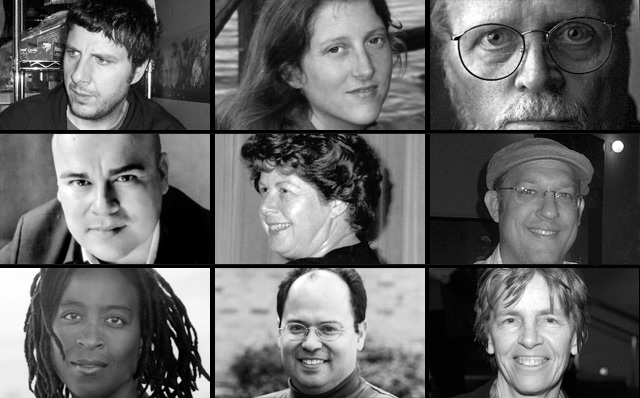The Poetry Foundation invited nine writers, myself included, to address the question of “How has poetry changed in the last ten years?” Travis Nichols edited the feature, trying to get nine authors who might address different aspects of the overall scene. The other writers include Matthew Zapruder, Annie Finch, Rigoberto González, Marjorie Perloff, Brent Cunningham, Camille Dungy, Francisco Aragón, & Eileen Myles. The feature has been up for a few days (see that first link or click on the photo). I wrote on the role of technology change over the past decade. Since it appeared, Don Share has written some very nice words about my piece. And Henry Gould, one of my own private oxpeckers, offers his perspective at length in Don’s comments stream.
Since Don felt permitted to quote my entire little note on his blog, I guess I can do the same here, except that I want to note that you should read all of the other contributions to this feature as well. And I should add that, ten years ago, the Poetry Foundation would never have thought to invite this particular set of poets & critics to address this sort of question – that in itself is a significant phenomenon of the new decade.
Poets blogging is just a symptom. The decline of indie bookstores, including the closure of such stalwarts as Cody’s & Shaman Drum, is just a symptom. The slow painful death of newspapers, most of whom have already tossed their book review section and literary critics overboard, is itself just a symptom. The collapse of academic literary journals – viz. TriQuarterly, Southern Review & Poetry Northwest, three of my first publishers – is just a symptom. Trade publishers openly speculate that they may be next, and even universities are starting to fear that their turn may be coming. They’re right.
Just as MFA programs have pumped the number of poets writing and publishing in the United States up from a few hundred a half century ago to tens of thousands today, the major institutions that not only embodied all of this activity but served an important (if hotly contested) gate-keeping function are now all being undermined or transformed by the ongoing revolution in communications technology. The poet’s relationship to his or her audience is undergoing a profound transformation. The poet’s relationship to the institutions and even to tools of her or his practice is doing likewise. Everything is up for grabs.
Some poets have chosen to embrace the new with everything from flarf to technology-based visual poetries. Others have decided that the “timeless” values of tradition will outlast even this. They recall and sometimes reiterate the archaeologist’s maxim that ultimately hard copy is truth. If you can’t dig it up in 5,000 years, did it ever exist? Ian Hamilton Finlay, with his stone-carved minimal texts, may outlast us all.
What’s apparent is that (a) this joyride isn’t over, and (b) we’re all in this together. When I realize that any chapbook publisher with a Blogspot page and PayPal account can sell directly to readers worldwide, I feel hopeful. I just hope we can find time to read & enjoy this great bounty.






